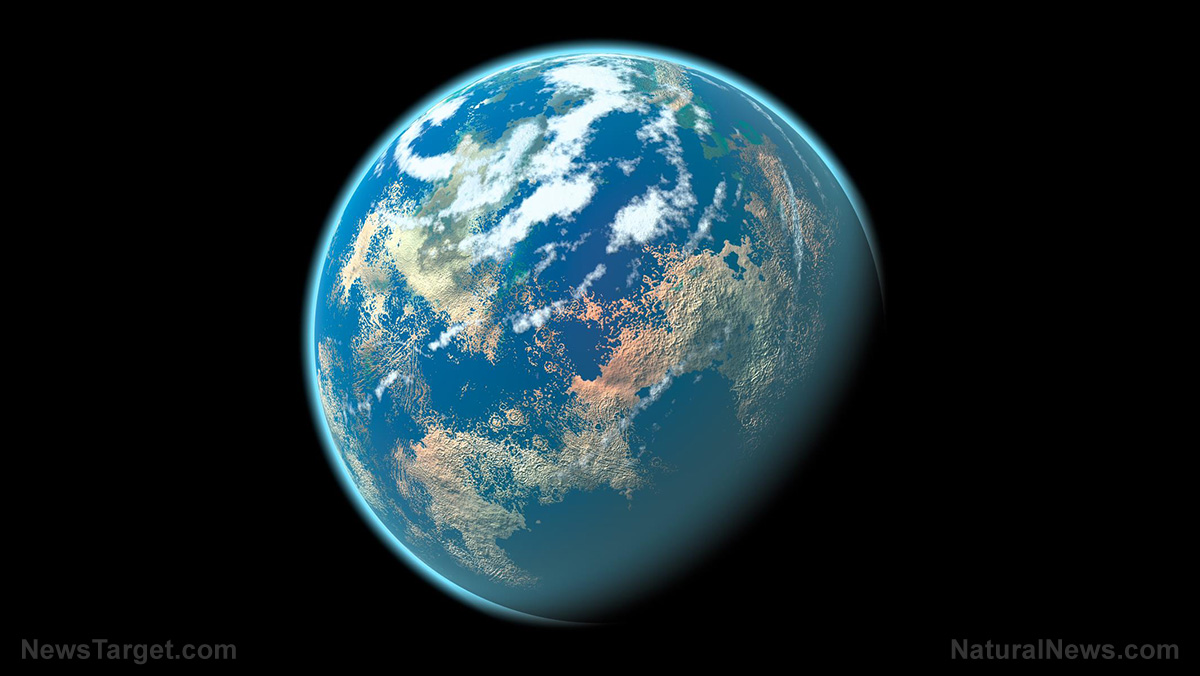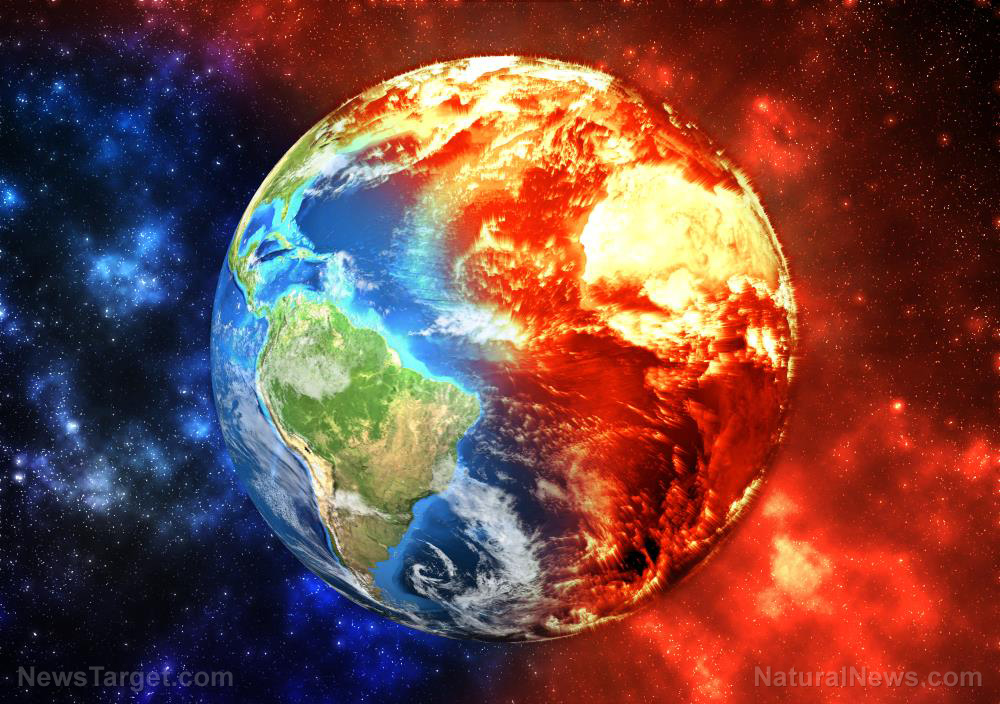How the continents were formed: Researchers explain how asteroid bombardment formed Earth’s crust
07/16/2019 / By Edsel Cook

An asteroid impact might very well end all life on Earth today. But in the early history of the planet, the constant shower of space rocks helped shape our planet’s crust. Eventually, they formed the continents that currently housed humankind.
Heavy bombardment during the Hadean eon caused the rocks on the surface of the Earth to melt on a massive scale. Majority of these rocks happened to be basaltic, and the impacts turned them into vast pools of hot molten material that spanned thousands of miles across.
“If you want to get an idea of what the surface of Earth looked like at that time, you can just look at the surface of the Moon which is covered by a vast amount of large impact craters,” commented University of the Witwatersrand (Wits) researcher Rais Latypov.
No one knows what happened to those massive melt sheets once they cooled down. One model suggests that the basalt pools reformed into magma bodies that were also basaltic in composition. In this scenario, asteroid impacts did not influence the evolution of the Earth’s early crust. (Related: Sci-fi in real life: Scientists propose building a space station INSIDE an asteroid and using its gravity to mine valuable space rocks.)
Did asteroid impacts shape the crust of the young Earth?
An opposing theory argues that the melt sheets hosted chemical reactions on a large scale. The changes created layers of magmatic rocks, which are more commonly known as igneous rocks.
This model suggests that asteroid impacts contributed to the formation of magmatic rocks in the early crust of the Earth. By extension, that same bombardment played a significant role in the chemical evolution of the planet.
Unfortunately, plate tectonics wiped out any evidence of the Hadean impact melts long ago. Researchers can no longer directly determine which model is in the right.
Instead, Latypov and his colleagues investigated the Sudbury Igneous Complex (SIC) in Canada. This impact melt sheet formed much later than the Hadean ones, so it survived to present times.
The Wits research team found that asteroid impacts possessed the potential to convert the basaltic material of the young Earth’s crust into other types of rock. Furthermore, the space rocks might have assisted the crust in changing its composition so that it contained more silica.
A Canadian asteroid impact provides clues about older Hadean melt sheets
In the distant past, a massive asteroid slammed into what eventually became Canada. The resulting melt sheet measured three miles at its thickest part. Over time, it became the SIC – the largest, most visible, and easy to reach asteroid impact melt sheet on the planet. Its many layers of igneous rock are considered to be remarkable.
The Wits researchers found large bodies of melanorite rocks in all the layers of the SIC. The presence of these rocks led them to conclude that chemical reactions on a large scale produced the magma rock layers of the melt sheet.
Based on their analysis, they theorized that the older Hadean impact melt sheets also experienced similar levels of chemical activity near the surface of the young Earth. The layers of the resulting bodies depended on the material that comprised them.
Eventually, thick layers of primitive rocks separated from those bodies and descended into the mantle. The sunken material left considerable amounts of floating crustal blocks in the Hadean crust. These blocks became the forerunners of the continents.
“This would make the crust compositionally layered and increasingly more evolved from its base towards the Earth’s surface,” Latypov reported. “These impacts made the crust compositionally more evolved — in other words, silica-rich in composition.”
Visit Space.news for more stories and studies on the origin of Earth and other planets.
Sources include:
Tagged Under: asteroid impacts, asteroids, continents, cosmic, discoveries, Earth, Earth's crust, melt sheets, planets, space research, space rocks, young Earth
RECENT NEWS & ARTICLES
Cosmic.News is a fact-based public education website published by Cosmic News Features, LLC.
All content copyright © 2018 by Cosmic News Features, LLC.
Contact Us with Tips or Corrections
All trademarks, registered trademarks and servicemarks mentioned on this site are the property of their respective owners.

















